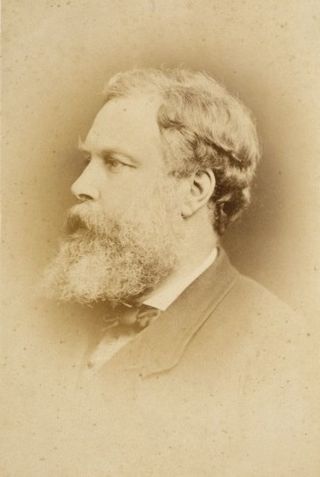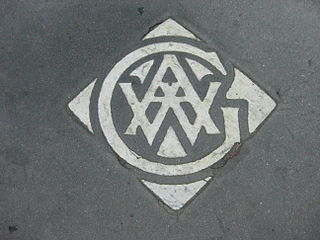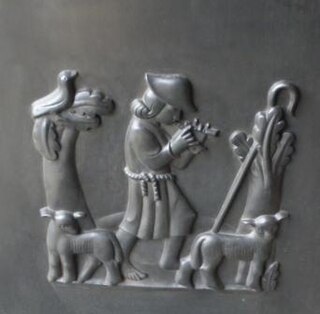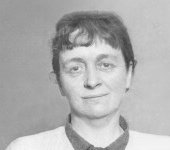
John Macallan Swan was an English painter and sculptor.

The Art Workers' Guild is an organisation established in 1884 by a group of British painters, sculptors, architects, and designers associated with the ideas of William Morris and the Arts and Crafts movement. The guild promoted the 'unity of all the arts', denying the distinction between fine and applied art. It opposed the professionalisation of architecture – which was promoted by the Royal Institute of British Architects at this time – in the belief that this would inhibit design. In his 1998 book, Introduction to Victorian Style, University of Brighton's David Crowley stated the guild was "the conscientious core of the Arts and Crafts Movement".

Walter Marsden (1882–1969) was an English sculptor born in Lancashire. He saw active service in the First World War and was awarded the Military Cross and Bar. He was awarded a civil pension by Queen Elizabeth 2 for services to sculpure. He was an associate of the Royal college of Art. He served in the Home Guard during WW 2 and worked for the Ministry of Home Security Camouflage Unit. Marsden assisted with the restoration work following the bombing of Coventry Cathedral.

Vernon Hill (1887–1972), born in Halifax, Yorkshire, England, was a sculptor, lithographer, illustrator and draughtsman.

Anne Crawford Acheson was a British-Irish sculptor. She and Elinor Hallé invented plaster casts for soldier's broken limbs. Acheson exhibited at the Royal Academy and internationally. She was awarded the CBE in 1919. During the First World War she worked for the Surgical Requisites Association at Mulberry Walk in Chelsea, London. Acheson received the Gleichen Memorial Award in 1938. She divided her time between London and Glenavy, County Antrim, Northern Ireland.

Radnor Walk is a residential street in the Royal Borough of Kensington & Chelsea off the King's Road in London. The houses are mid and late Victorian and the street is part of the Royal Hospital Conservation Area. It was originally called Radnor Street, and was named after John Robartes, 1st Earl of Radnor who died in Chelsea in 1685. It was renamed Radnor Walk in 1937.
Thomas Stirling Lee was an English sculptor, specialising in reliefs and portrait heads.
Trafalgar Studios were a set of purpose-built artists' studios on Manresa Road in the Chelsea area of London, England, just off the King's Road. A number or notable artists worked there.
Lilla Mary Vanston was an Irish sculptor and portrait painter.
Hazel Ruthven Armour was a Scottish sculptor and medalist.

Alice Bertha Moreton, née Tippin, was an English sculptor, draughtsman and artist from Liverpool.
The works of Herbert Maryon (1874–1965) were made in a variety of mediums. They were intended to be decorative, functional, or commemorative, and were primarily made during the first four decades of the twentieth century, a span that marked the first half of Maryon's career. In addition to being a sculptor and a goldsmith, Maryon was also an archaeologist, conservator, author, and authority on ancient metalwork—he saw his career as an artist carry him through the Second World War; a second career as a conservator at the British Museum brought him note for his work on the finds from the Sutton Hoo ship-burial.
Christabel Dennison (1884-1924) was a British artist, known for her paintings and sculptures.
John Warrington Wood was a British sculptor of mythological subjects and portrait busts. He exhibited works at the Royal Academy from 1868 to 1874.
Pauline Boumphrey was an American sculptor who spent the majority of her career working in Britain.
Alice Mary Chaplin was a British sculptor who produced statuettes and sculpture groups in bronze and terracotta.
Alice Lindley-Millican (1885–1930) was a British sculptor known for her figurative works.
Percival ("Percy") Herbert Portsmouth RSA FRSBS (1874–1953) was a 20th-century British sculptor. His most notable public work is Elgin War Memorial, and the similar War Memorial in Thurso.
Mary Morton was a British sculptor.







